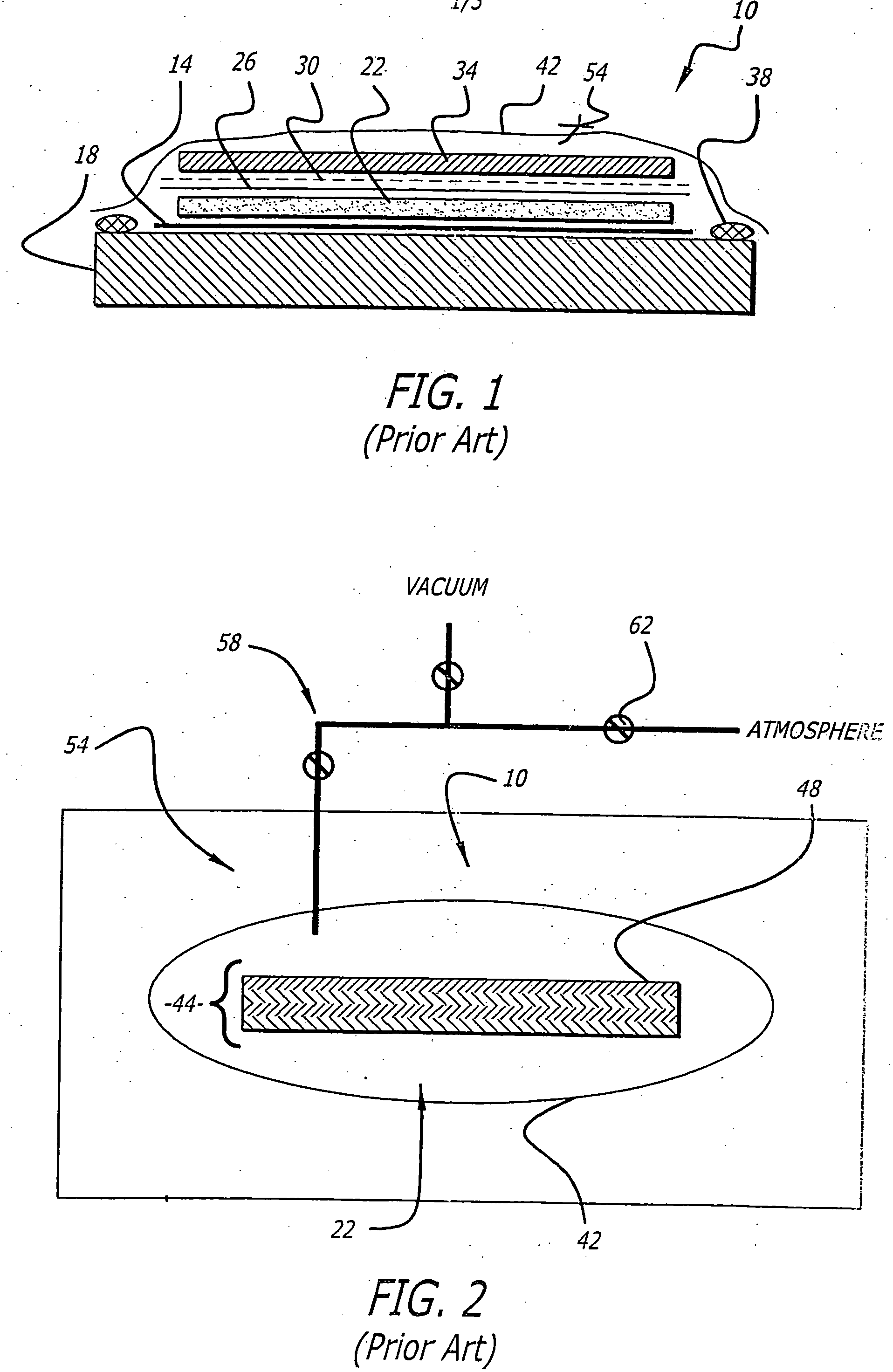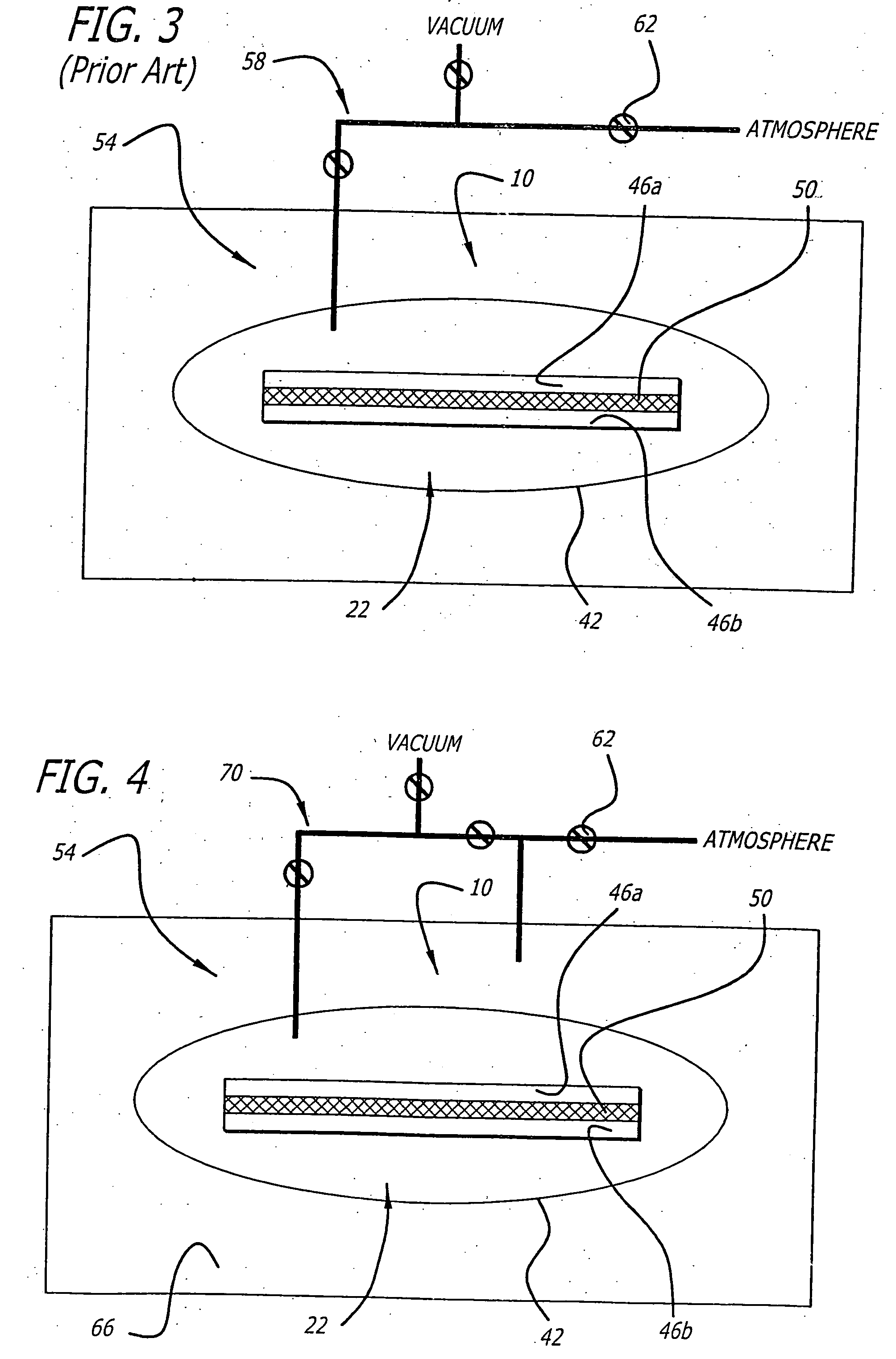System and method for vacuum bag fabrication
a vacuum bag and vacuum bag technology, applied in the field of adhesive bonding and laminating, can solve the problems of low void content, air trapped in the bond line, etc., and achieve the effect of reducing the amount of trapped air
- Summary
- Abstract
- Description
- Claims
- Application Information
AI Technical Summary
Benefits of technology
Problems solved by technology
Method used
Image
Examples
Embodiment Construction
[0037] While the present invention is described herein with reference to illustrative embodiments for particular applications, it should be understood that the invention is not limited thereto. Those having ordinary skill in the art and access to the teachings provided herein will recognize additional modifications, applications, and embodiments within the scope thereof and additional fields in which the present invention would be of significant utility.
[0038]FIG. 1 illustrates construction of a typical vacuum bag lay up 10. A layer of release agent 14 is placed on the tool 18. The assembly 22 is placed on top of the release agent 14. On top of that is placed a tear ply 26 (if needed), a release film 30 and a bleeder 34. Sealant 38 is laid around the assembly 22 at the edge of the tool 18. The bag 42 is laid over the entire assembly and finally a vacuum fitting 54 is installed through the bag 42.
[0039] The lay up 10 just described is generic. It can be used for lamination of compo...
PUM
| Property | Measurement | Unit |
|---|---|---|
| atmospheric pressure | aaaaa | aaaaa |
| lap shear strength | aaaaa | aaaaa |
| lap shear strengths | aaaaa | aaaaa |
Abstract
Description
Claims
Application Information
 Login to View More
Login to View More - R&D
- Intellectual Property
- Life Sciences
- Materials
- Tech Scout
- Unparalleled Data Quality
- Higher Quality Content
- 60% Fewer Hallucinations
Browse by: Latest US Patents, China's latest patents, Technical Efficacy Thesaurus, Application Domain, Technology Topic, Popular Technical Reports.
© 2025 PatSnap. All rights reserved.Legal|Privacy policy|Modern Slavery Act Transparency Statement|Sitemap|About US| Contact US: help@patsnap.com



